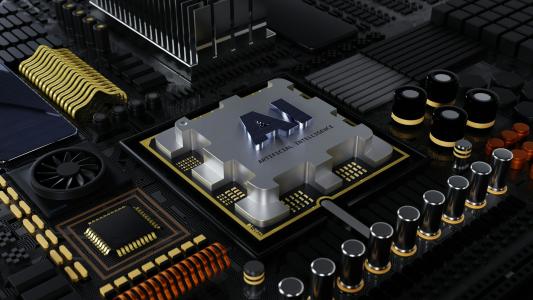This article is adapted from The Singularity is Nearer: When We Merge With AI by Ray Kurzweil, published by Viking. Copyright © 2024 by Ray Kurzweil. Reprinted courtesy of Penguin Random House.
Most of our progress in disease treatment and prevention to date has been the product of the linear process of hit-or-miss efforts to find useful interventions. Because we have lacked tools for systematically exploring all possible treatments, discoveries under this paradigm have owed a lot to chance. Likely the most notable chance breakthrough in medicine was the accidental discovery of penicillin — which opened up the antibiotic revolution and has since saved perhaps as many as 200 million lives. But even when discoveries aren’t literally accidental, it still takes good fortune for researchers to achieve breakthroughs with traditional methods. Without the ability to exhaustively simulate possible drug molecules, researchers have to rely on high-throughput screening and other painstaking laboratory methods, which are much slower and more inefficient.
To be fair, this approach has brought great benefits. A thousand years ago, European life expectancy at birth was just in the twenties, since so many people died in infancy or youth from diseases like cholera and dysentery, which are now easily preventable. By the middle of the nineteenth century, life expectancy in the United Kingdom and the United States had increased to the forties. As of 2023, it has risen to over eighty in much of the developed world. So, we have nearly tripled life expectancy in the past thousand years and doubled it in the past two centuries. This was largely achieved by developing ways to avoid or kill external pathogens — bacteria and viruses that bring disease from outside our bodies.
Today, though, most of this low-hanging fruit has been picked. The remaining sources of disease and disability spring mostly from deep within our own bodies. As cells malfunction and tissues break down, we get conditions like cancer, atherosclerosis, diabetes, and Alzheimer’s. To an extent we can reduce these risks through lifestyle, diet, and supplementation — what I call the first bridge to radical life extension. But those can only delay the inevitable. This is why life expectancy gains in developed countries have slowed since roughly the middle of the twentieth century. For example, from 1880 to 1900, life expectancy at birth in the United States increased from about thirty-nine to forty-nine, but from 1980 to 2000 — after the focus of medicine had shifted from infectious disease to chronic and degenerative disease — it only increased from seventy-four to seventy-six.
Fortunately, during the 2020s we are entering the second bridge: combining artificial intelligence and biotechnology to defeat these degenerative diseases. We have already progressed beyond using computers just to organize information about interventions and clinical trials. We are now utilizing AI to find new drugs, and by the end of this decade, we will be able to start the process of augmenting and ultimately replacing slow, underpowered human trials with digital simulations. In effect we are in the process of turning medicine into an information technology, harnessing the exponential progress that characterizes these technologies to master the software of biology.
One of the earliest and most important examples of this is found in the field of genetics. Since the completion of the Human Genome Project in 2003, the cost of genome sequencing has followed a sustained exponential trend, falling on average by around half each year. Despite a brief plateau in sequencing costs from 2016 to 2018 and slowed progress amid the disruptions of the COVID-19 pandemic, costs continue to fall — and this will likely accelerate again as sophisticated AI plays a greater role in sequencing. Costs have plunged from about $50,000,000 per genome in 2003 to as low as $399 in early 2023, with one company promising to have $100 tests available by the time you read this.
As AI transforms more and more areas of medicine, it will give rise to many similar trends. It is already starting to have a clinical impact, but we are still in the early part of this particular exponential curve. The current trickle of applications will become a flood by the end of the 2020s.
In effect we are in the process of turning medicine into an information technology, harnessing the exponential progress that characterizes these technologies to master the software of biology.
We will then be able to start directly addressing the biological factors that now limit the maximum life span to about 120 years, including mitochondrial genetic mutations, reduced telomere length, and the uncontrolled cell division that causes cancer.
In the 2030s we will reach the third bridge of radical life extension: medical nanorobots with the ability to intelligently conduct cellular-level maintenance and repair throughout our bodies. By some definitions, certain biomolecules are already considered nanobots. But what will set the nanobots of bridge three apart is their ability to be actively controlled by AI to perform varying tasks. At this stage, we will gain a similar level of control over our biology as we presently have over automobile maintenance. That is, unless your car gets destroyed outright in a major wreck, you can continue to repair or replace its parts indefinitely. Likewise, smart nanobots will enable targeted repair or upgrade of individual cells — definitively defeating aging.
The fourth bridge — being able to back up our mind files digitally — will be a 2040s technology. The core of a person’s identity is not their brain itself, but rather the very particular arrangement of information that their brain is able to represent and manipulate. Once we can scan this information with sufficient accuracy, we’ll be able to replicate it on digital substrates. This would mean that even if the biological brain was destroyed, it wouldn’t extinguish the person’s identity — which could achieve an almost arbitrarily long lifespan being copied and recopied to safe backups.






